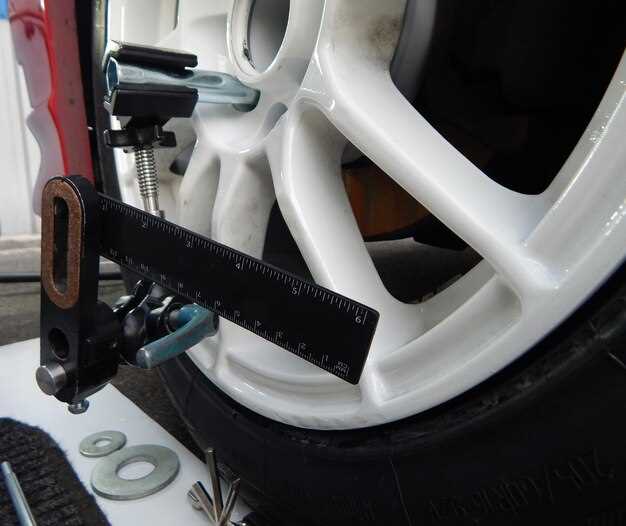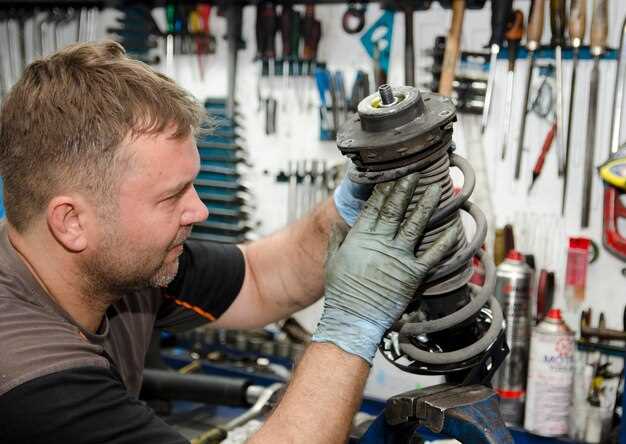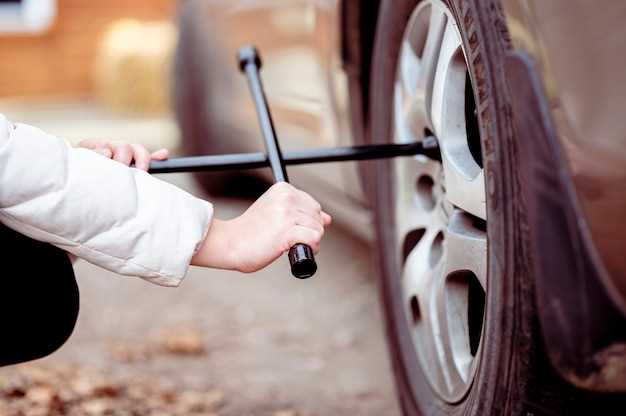
The decision to install spacers on a VW Corrado can significantly alter the vehicle’s performance and aesthetics. Spacers are designed to widen the wheelbase, providing a more aggressive stance and potentially enhancing handling characteristics. However, this modification comes with its own set of advantages and disadvantages that every Corrado owner should consider before proceeding.
One of the primary benefits of adding spacers is improved stability during cornering. By increasing the track width, the vehicle can achieve better grip, which is particularly advantageous for those who enjoy spirited driving or track days. Furthermore, spacers can contribute to a more visually appealing profile, filling out the wheel arches and creating a more pronounced look.
On the other hand, there are some drawbacks associated with installing spacers. First and foremost, they can place additional stress on suspension components and wheel bearings, potentially leading to increased maintenance and quicker wear over time. Additionally, improper installation or choosing the wrong size spacer may result in alignment issues or even tire rubbing, compromising safety and ride quality.
Installing Spacers on VW Corrado: Pros and Cons
Installing spacers on a VW Corrado can significantly impact the vehicle’s handling, aesthetics, and overall performance. Below, we explore the advantages and disadvantages associated with this modification.
| Pros | Cons |
|---|---|
| Improved Stance: Spacers can increase the vehicle’s width, enhancing its visual appeal and providing a more aggressive stance. | Offset Issues: Using spacers alters the wheel offset, which may lead to alignment problems if not carefully calculated. |
| Better Handling: Increased wheel track can improve stability in corners, enhancing overall handling dynamics. | Potential for Increased Wear: Extra load on wheel bearings and suspension components may lead to accelerated wear and tear. |
| Compatibility: Spacers enable the use of wider tires, providing better grip and performance capability. | Installation Complexity: Installing spacers might require additional modifications, such as extended bolts or additional suspension adjustments. |
| Customizability: Spacers allow for fine-tuning the look and performance of the vehicle to meet personal preferences. | Legal and Insurance Considerations: Some modifications may not comply with local regulations, potentially affecting insurance coverage. |
In conclusion, installing spacers on a VW Corrado presents both advantages and disadvantages. Careful consideration of the vehicle’s intended use and a thorough understanding of the potential impacts on offset and overall performance are essential for making an informed decision.
Understanding Wheel Spacers and Their Functionality

Wheel spacers are aftermarket accessories installed between the vehicle’s hub and the wheel. Their primary purpose is to increase the offset of the wheel, allowing for a wider stance without having to change the wheels themselves. This modification can result in improved handling, a more aggressive look, and enhanced stability during cornering.
Offset refers to the distance between the centerline of the wheel and the plane of the hub-mounting surface. When the offset is increased using spacers, the wheel is pushed further out from the vehicle’s body. This can lead to better clearance for suspension components and brakes, as well as potentially accommodating larger tires for improved traction and aesthetics.
Installing spacers can also affect the alignment of the suspension. It’s essential to ensure that the suspension geometry remains intact, as excessive offset changes can lead to increased wear on components like tires and bearings. Proper installation, including the use of high-quality spacers that fit the vehicle specifications, is crucial to avoid any complications.
In summary, wheel spacers serve as practical tools for modifying a vehicle’s stance and enhancing its performance. However, potential buyers should weigh the benefits against the possible effects on alignment and wear, making informed decisions based on their specific requirements and driving style.
Choosing the Right Offset for Your VW Corrado
Selecting the appropriate offset for your VW Corrado is crucial for achieving the desired aesthetics and handling performance. The offset refers to the distance between the wheel’s hub mounting surface and the centerline of the wheel. An incorrect offset can lead to various issues, including wheel fitment problems, tire wear, and suspension strain.
When it comes to spacers, understanding offset helps ensure that your wheels sit properly within the wheel wells. Here are factors to consider when choosing the right offset:
- Width of the Wheel: Wider wheels require a different offset compared to standard ones. If you’re opting for wider wheels, you might need to increase the offset to avoid rubbing against the fenders.
- Desired Stance: Many enthusiasts prefer a flush look where the wheels align closely with the fender edges. To achieve this, adjusting the offset with spacers may be necessary.
- Suspension Setup: If your Corrado has an aftermarket suspension, consider how this affects the wheel positioning. Lowering the vehicle can change the geometry, impacting the required offset.
- Brake Clearance: Ensure that your chosen offset does not interfere with the brake components. Insufficient clearance can lead to reduced performance and safety hazards.
- Handling Characteristics: Altering the wheel offset can influence handling dynamics. A more negative offset may improve cornering stability but could lead to a harsher ride.
To determine the suitable offset:
- Check your current wheel specifications and offset values.
- Consider the additional spacer thickness if applicable.
- Test fit the wheels to confirm clearance and alignment with the vehicle stance.
By carefully selecting the right offset, you can enhance the performance and appearance of your VW Corrado while ensuring a safe and enjoyable driving experience.
Benefits of Installing Wheel Spacers on Your Vehicle
Installing wheel spacers can significantly enhance the performance and aesthetics of your vehicle. One of the primary advantages is improved handling. By increasing the wheel’s track width, spacers boost stability during cornering, reducing the likelihood of body roll and enhancing grip.
Another benefit is the visual appeal. Wheel spacers can create a wider stance that makes your vehicle appear more aggressive and sporty. This aesthetic enhancement is particularly sought after by car enthusiasts looking to personalize their vehicles.
Additionally, wheel spacers can help in fitting larger tires without additional modifications. This allows drivers to upgrade their tires for better traction and performance, making them suitable for various driving conditions.
Furthermore, spacers can correct wheel alignment issues that may arise due to factory specifications. This correction helps in maintaining even tire wear, prolonging the life of your tires and improving overall driving safety.
Finally, installing wheel spacers can also increase brake caliper clearance for those who wish to upgrade to larger brakes. This modification is especially beneficial for performance-driving environments, where enhanced braking capability is crucial.
Potential Drawbacks and Risks of Spacer Installation
Installing wheel spacers on a VW Corrado can enhance the vehicle’s stance and handling characteristics, but it also carries several potential drawbacks and risks that should be carefully considered.
One significant concern is the impact on wheel alignment. When spacers are added, the geometry of the suspension changes, which can lead to misalignment. This misalignment may cause uneven tire wear and affect the vehicle’s handling, leading to instability during high-speed maneuvers.
Another risk involves bearing load. Adding spacers increases the distance between the wheel and the hub, which can cause additional stress on the wheel bearings over time. This added strain may result in premature bearing failure, requiring costly repairs and maintenance.
Moreover, the use of spacers can negatively affect the vehicle’s ride quality. As the wheel is positioned further away from the suspension components, it can alter the dynamics of the suspension system, potentially resulting in a harsher ride and reduced comfort for occupants.
Installation quality is also a critical factor. Incorrectly installed spacers can lead to vibrations, which may cause further damage to suspension components and create an unsafe driving experience. Ensuring proper torque specifications and using high-quality spacers is essential to mitigate this risk.
Lastly, modifying the vehicle with spacers can impact insurance and resale value. Some insurance providers may view this modification as a riskier change, potentially leading to higher premiums. Additionally, prospective buyers may view the installation of spacers as a negative, especially if they are not familiar with the benefits.
In summary, while the aesthetic and performance enhancements of wheel spacers on a VW Corrado can be appealing, the potential drawbacks and risks, including alignment issues, increased bearing load, ride quality alterations, installation pitfalls, and possible implications for insurance and resale value, warrant careful consideration before proceeding with installation.
How to Properly Install Wheel Spacers on VW Corrado

Installing wheel spacers on your VW Corrado can enhance its appearance and improve handling by adjusting offset. Follow these steps for a proper installation:
First, ensure you have the correct wheel spacers for your model. Measure your existing offset and choose spacers that achieve the desired look and functionality without compromising safety. It is generally recommended to use spacers made from high-quality materials, such as aluminum, to ensure durability.
Next, gather the necessary tools for the installation, which typically include a lug wrench, torque wrench, and possibly a jack and jack stands. Safety precautions are crucial, so make sure your vehicle is securely lifted and supported before beginning the process.
Once prepared, remove the wheel from the hub. Use the lug wrench to loosen the bolts, and then take the wheel off to expose the hub. Clean the hub surface thoroughly to remove any dirt or debris, as a clean surface is essential for proper spacer fitting.
After cleaning, align the spacer on the hub. Ensure that it fits snugly and that the holes for the lug bolts align properly with the threaded holes in the hub. This step is vital because misalignment can lead to vibrations and handling issues.
Next, attach the spacer securely using the provided lug bolts. Hand-tighten the bolts initially, and once they are all in place, use the torque wrench to tighten them to the manufacturer’s specified torque setting. Proper torque is crucial to prevent the spacers from loosening over time.
After securing the spacer, it’s time to reattach the wheel. Place the wheel back onto the spacer, ensuring it fits correctly. Following this, hand-tighten the lug bolts, and then use the torque wrench again to tighten them to the recommended specifications.
Finally, lower the vehicle back to the ground and perform a final check on all lug bolts to ensure they are tight. It’s advisable to recheck the torque after a short drive to ensure everything is secure. This installation method will help you to achieve the desired offset and improve your VW Corrado’s performance and stance effectively.
Maintenance and Adjustment Tips After Installation
After installing spacers on your VW Corrado, it is essential to implement proper maintenance and adjustments to ensure optimal performance and safety. Regular checks should become a routine part of your vehicle’s upkeep.
First, periodically inspect the wheel lug nuts to ensure they remain tightened. Spacers can sometimes cause additional stress on lug nuts, and they may loosen over time. It’s advisable to check the torque of the lug nuts after the initial installation and then again after driving a short distance to confirm they are secure.
Next, monitor your tire alignment closely. The installation of spacers can alter the suspension geometry, leading to misalignment. If you notice uneven tire wear or your steering feels off, consider having a professional alignment performed to correct any discrepancies. Proper alignment will not only enhance handling but also extend the lifespan of your tires.
Additionally, keep an eye on the brake components. Spacers may affect the clearance between the wheels and brakes, potentially causing rubbing issues or increased wear on brake parts. Make sure there is enough clearance and check brake performance regularly to prevent any issues.
Finally, it’s recommended to inspect the spacers themselves for any signs of wear or damage. Look for cracks or distortions which could jeopardize the integrity of the setup. If any irregularities are detected, consider replacing them to maintain the safety of your vehicle.








